From ‘See you in court!’ to the Supreme Court: Who’s up and down in the history of Trump’s travel ban
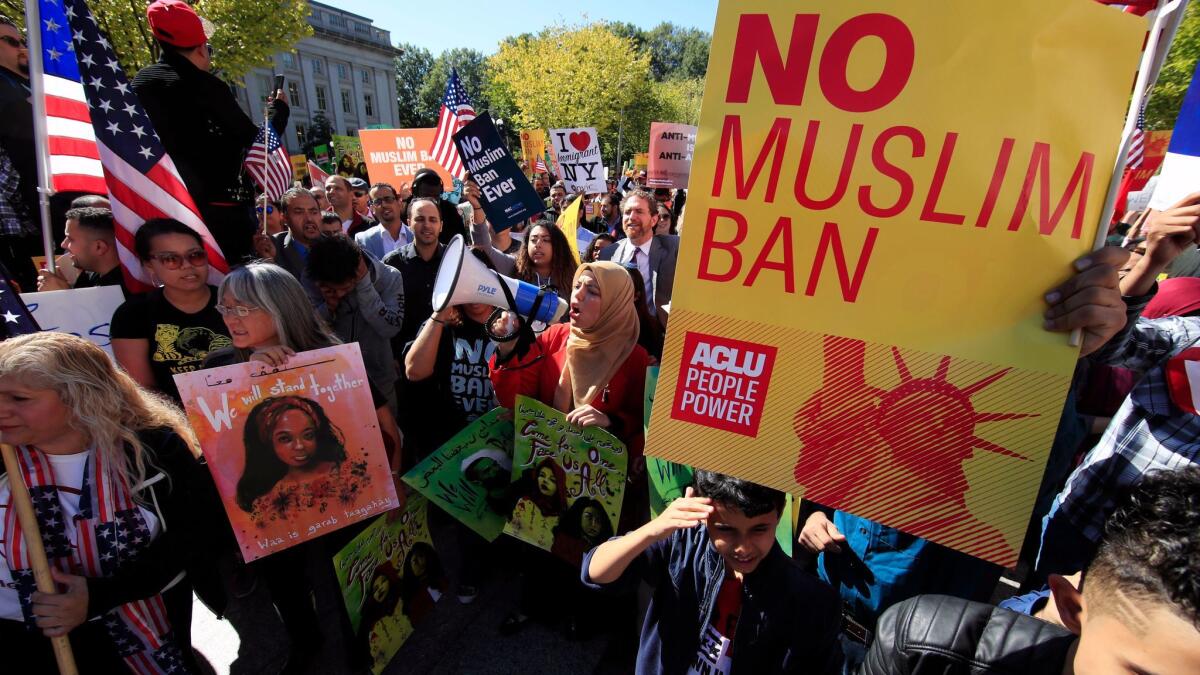
In an order this week allowing President Trump’s travel ban to go into effect, the Supreme Court added another chapter to a nearly yearlong fight between the Trump administration and civil rights groups over one of the most controversial policies of his presidency.
It’s a battle in which each side has claimed major wins. Judges have used Trump’s tweets, campaign statements and verbal outbursts to knock down the ban, ruling repeatedly that it discriminates against Muslims and violates immigration law.
But the Trump administration has landed the biggest victories in two temporary orders by the Supreme Court allowing versions of the ban to go into effect. The administration has hailed the orders — each a page or two long — as evidence that the president is within his power to restrict travel in the name of national security.
For now, most nationals of Syria, Libya, Iran, Yemen, Somalia, Chad and North Korea will not be allowed into the U.S.
The Supreme Court is widely expected to conduct a full legal review of the ban, but that has not been scheduled.
“You can speculate on the court, but it’s still unclear if a majority of them would rule in favor of the government,” said Carl Tobias, a law professor at the University of Richmond. “They haven’t had the chance.”
Here’s a history of court actions on the ban:
Jan. 27: The first ban
Trump signed the first travel ban on a Friday afternoon, promising it would keep terrorists out of the country. It immediately blocked U.S. travel by all people with visas from seven Muslim-majority countries — Iraq, Iran, Libya, Somalia, Sudan, Syria and Yemen — for 90 days. It also set up a 120-day ban on all refugees and permanently stopped the resettlement of refugees from Syria.
Within days, the State Department revoked tens of thousands of visas. Green-card holders returning to the U.S. found themselves detained at airports, and crowds swelled at international terminals across the country to protest.
Feb. 3: Judge in Seattle blocks first ban
Replying to a case brought by the states of Washington and Minnesota, U.S. District Judge James Robart said the ban could no longer remain in effect. Other judges had already blocked parts of the ban, but Robart’s ruling was the broadest order and applied nationwide.
“It’s a wonderful day for the rule of law in our country,” Washington state’s solicitor general, Noah Purcell, said at the time. “The order was haphazardly carried out and poorly thought up.”
Feb. 9: Appeals court upholds block on first ban
In an unanimous decision, a panel of three judges in the U.S. 9th Circuit Court of Appeals said Robart’s nationwide order halting the travel ban should stand. The judges said they were unconvinced that the nation needed the ban for security.
Trump took to Twitter to reply. “SEE YOU IN COURT, THE SECURITY OF OUR NATION IS AT STAKE!” he tweeted.

March 6: Trump signs second ban
In attempt to pass court muster, Trump signed a revised, pared-down ban on residents of six Muslim-majority countries.
The ban blocked travel for 90 days for residents of Iran, Libya, Somalia, Sudan, Syria and Yemen. It included a refugee ban of 120 days. Iraqi nationals, who were named on the first ban, were no longer included. It removed language from Trump’s earlier order that courts said illegally gave preference to non-Muslim refugees, and had language allowing exemptions for green-card holders, dual citizens and other specific visa holders.
March 15: Hawaii judge blocks second ban
U.S. District Judge Derrick Watson in Honolulu wrote that despite the ban’s “stated secular purpose,” Trump’s own words acted against him.
In another case, U.S. District Judge Theodore Chuang in Maryland also ruled against Trump. The judge said it was “likely” that Trump’s ban violated the Constitution by discriminating against Muslims.
May 25: Appeals court upholds block of ban
The U.S. 4th Circuit Court of Appeals refused to go against the Maryland court order blocking the ban. “We remain unconvinced [the ban] has more to do with national security than it does with effectuating the president’s promised Muslim ban,” judges wrote.
On June 12, the 9th Circuit similarly upheld the Hawaii ruling against the ban. It said Trump’s order violated the Immigration and Nationality Act.
June 26: Supreme Court revives second ban
In a brief, unsigned opinion, the Supreme Court said that a limited version of the second ban could be put into place. The court did not rule on the constitutionality of the ban, saying it would instead take up those questions in the fall. But justices said it could apply to anyone without “bona fide relationships” with Americans or U.S. entities. It said those included spouses, employers and universities, but largely left the definition of “bona fide” open to interpretation.
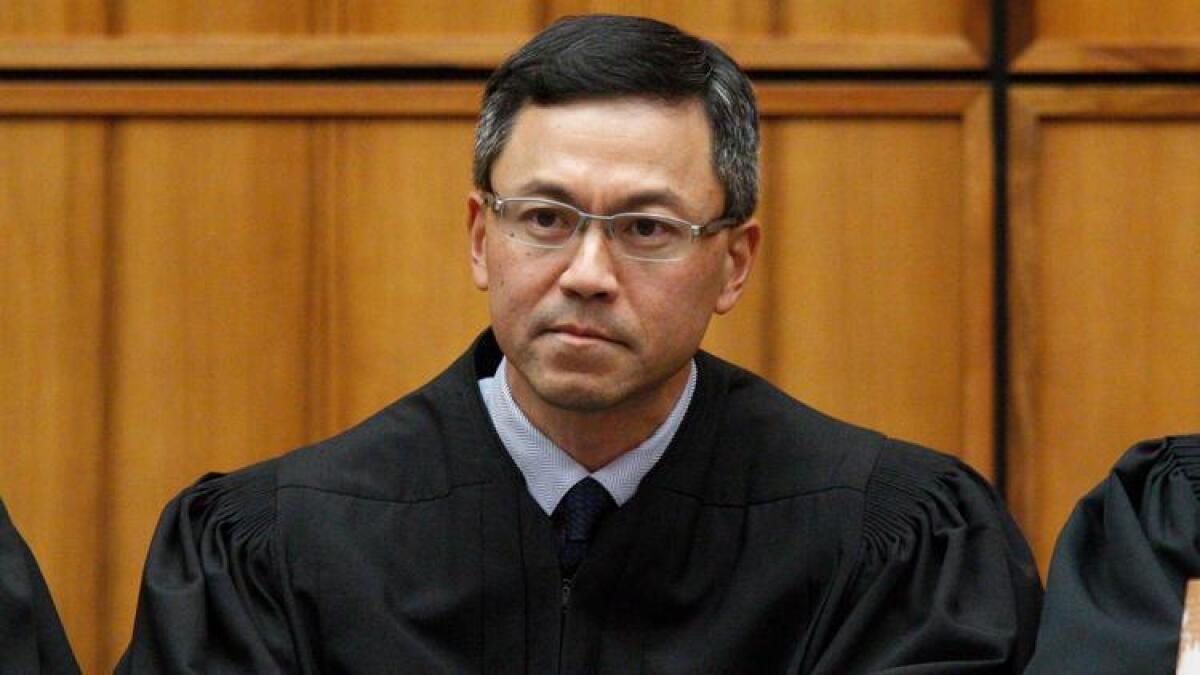
July 13: Hawaii judge says grandparents, other relatives must be exempt from ban
Going against the Trump administration’s policy on who falls under the ban, Watson said those exempt from it included travelers who had grandparents, grandchildren, aunts, uncles, nieces, nephews, cousins and brothers- and sisters-in-law in the U.S.
The judge also said refugees could not be blocked if they had “formal assurance” from U.S. resettlement agencies for relocation to the country.
July 19: Supreme Court reinstates restrictions on refugees
Justices said the Trump administration could reinstate restrictions on refugee resettlement, but that it could not limit the kinds of “close” family members exempt from the ban on visitors from the six countries.
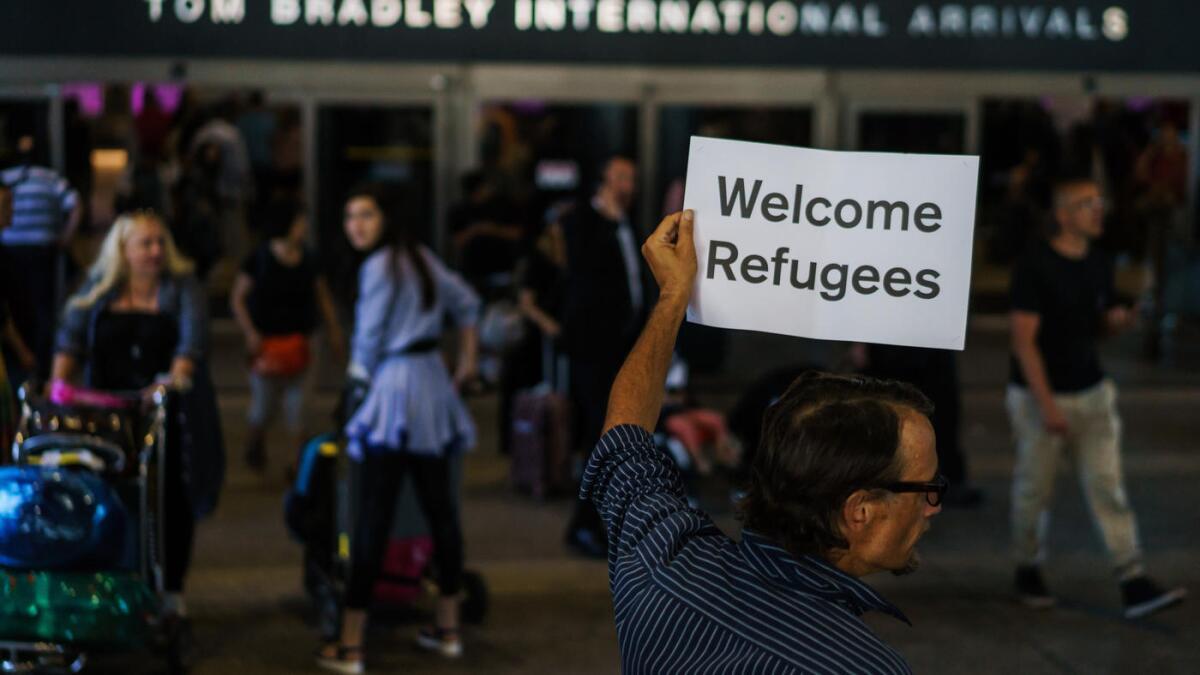
Sept. 7: Appeals court says refugees must be allowed in
Judges on the 9th Circuit upheld a ruling from Watson that said refugees who had relationships to resettlement agencies in the U.S. could count those as “bona fide” connections to exempt them from the refugee ban.
Sept. 12: Supreme Court allows government to block 24,000 refugees
The court reversed a ruling from the 9th Circuit that forced the government to let up to 24,000 refugees into the country.
Travel ban opponents argued that kind of relationship was a “bona fide” one that would make the refugees exempt from the travel ban.
Sept. 24: Trump signs third ban
The new ban covered travel to the U.S. by most nationals of Syria, Libya, Iran, Yemen, Somalia, Chad and North Korea. The ban also restricted travel by certain Venezuelan government officials and their families.
It was scheduled to take effect Oct. 18 and, unlike prior bans that had expired or were rescinded, it was indefinite.
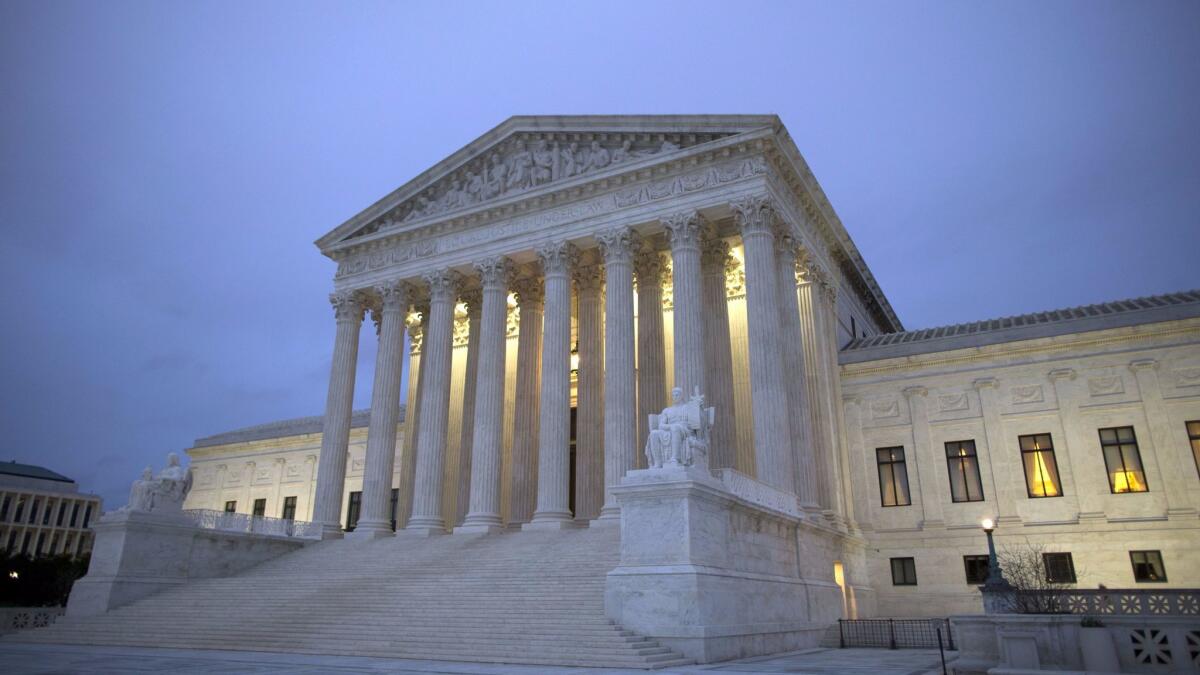
Oct. 10: Supreme Court drops ban case
Two cases — originating in Watson’s and Chuang’s courts — blocking a second version of the travel and refugee ban were set for October oral arguments in the Supreme Court.
Justices dropped them because the ban had expired and was replaced by a new one.
Oct. 17: Hawaii judge halts ban nationwide
In response to a lawsuit from the state of Hawaii and Muslims in the state, Watson blocked the entire ban on nationals of the six Muslim-majority countries — but not North Korea or select Venezuelan officials. His order came the day before the latest travel ban was to go into effect.
Watson said the ban went against the Immigration and Nationality Act and “plainly discriminates based on nationality” in a way that was “antithetical” to American principles. He wrote that the order “suffers from precisely the same maladies as its predecessor: It lacks sufficient findings that the entry of more than 150 million nationals from six specified countries” would harm U.S. interests.
Oct. 18: Maryland judge halts ban nationwide
In ruling against the ban, Chuang said the administration could not enforce it on any person with a “bona fide” connection to the U.S. Chuang wrote that the president’s campaign trail comments about Muslims and his Twitter postings pointed to the ban being an unconstitutional example of religious discrimination.
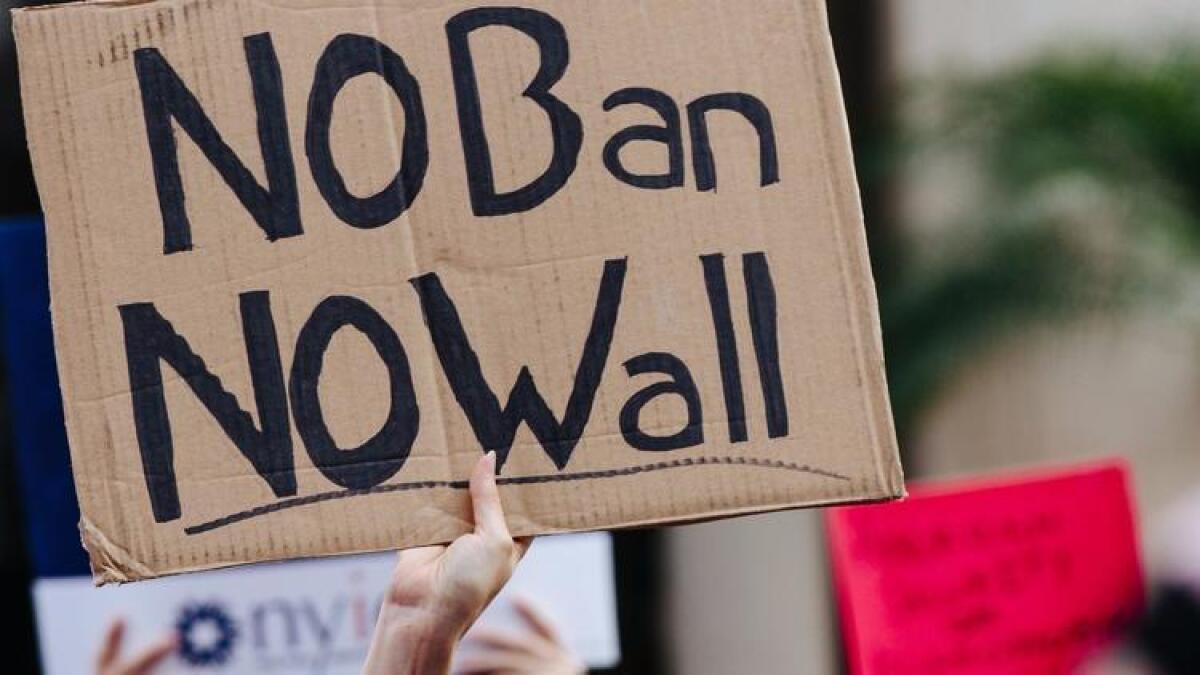
Nov. 13: Appeals court allows a partial ban
After the Trump administration made an emergency request for the 9th Circuit to reverse Watson’s order, appellate judges struck a middle ground. They allowed the ban to stay blocked but only for people who had “bona fide” connections in the U.S.
Dec. 4: Supreme Court revives ban
The court said the ban could go into effect on most nationals of the six Muslim-majority countries. Justices overruled the 9th Circuit, where judges earlier said the government could only block travelers who did not have “bona fide” U.S. connections, such as family members in the country or job offers.
Jaweed Kaleem is The Times' national race and justice correspondent. Follow him on Twitter, Facebook and Instagram.
Start your day right
Sign up for Essential California for news, features and recommendations from the L.A. Times and beyond in your inbox six days a week.
You may occasionally receive promotional content from the Los Angeles Times.




